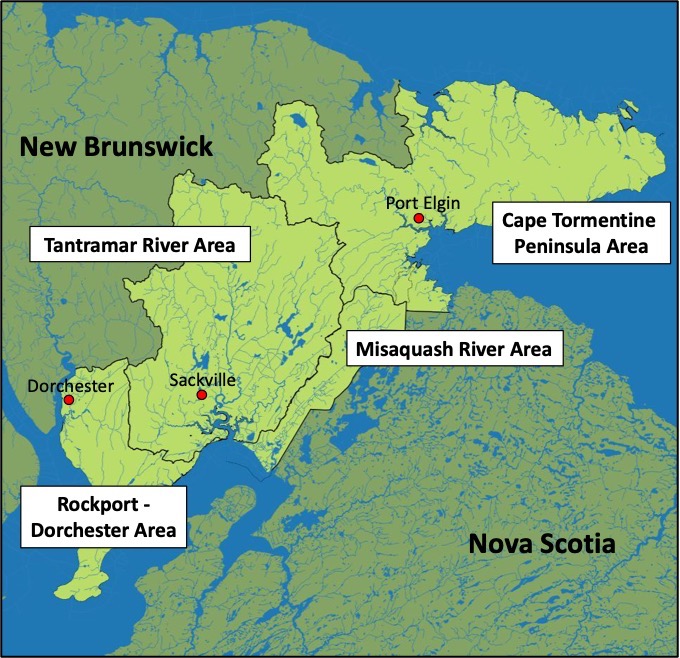Understanding and Assessing Impacts
Healthy watersheds are a vital component of healthy, vibrant communities and critical to the overall health and sustainability of New Brunswick. Water quality faces threats from climate change across the province, and the Tantramar region is among one of the most vulnerable regions to climate change impacts due to its low-lying coastal location. Water monitoring is an essential step in managing and protecting regional water resources in the face of climate change.
The monitoring region covers 30 sites across four sub-watersheds located within the Chignecto Isthmus: Cape Tormentine Peninsula, Tantramar River, Misaquash, and Johnson Creek (see figure below). Sites were chosen with the goal of monitoring a variety of different land uses. Because of the large territory and large number of sites, EOS staff visit one region per year. Because of provincial border restrictions due to COVID-19 and ongoing uncertainty during the pandemic, they have not yet monitored the Misaquash watershed which lies on the border between NS and NB.
In-situ measurements, consisting of pH, temperature, conductivity, dissolved oxygen, total dissolved solids, and salinity are taken from May to October. Water samples are also collected and brought to the RPC Laboratory (New Brunswick’s provincial research organization) in Moncton for further in-depth analysis of 59 parameters. For the first time, EOS also measured Chlorophyll-a from June to September 2021 and analyzed results in the ACME laboratory at Mount Allison University.
Additionally, two community ‘Water Sampling Blitzes’ for E.coli were undertaken with the help of citizen scientists in the Cape Tormentine Watershed Composite to establish baselines within this watershed to better inform the monitoring process, and to engage the local community on the importance of watershed health. A total of 95 samples, across 54 fresh and saltwater sites were collected over the two events. The participation feedback received from community members highlights the amount of community interest in water quality and the power of community-based monitoring to sample large geographical areas. Citizen scientists have also helped EOS monitor for E.coli in Silver Lake in Sackville, NB.
